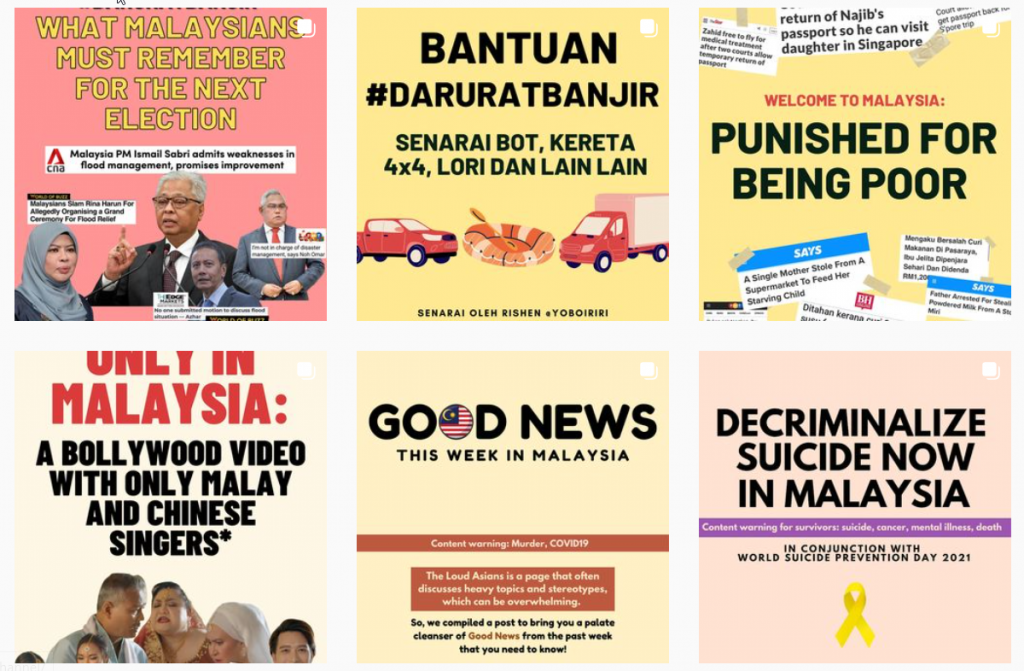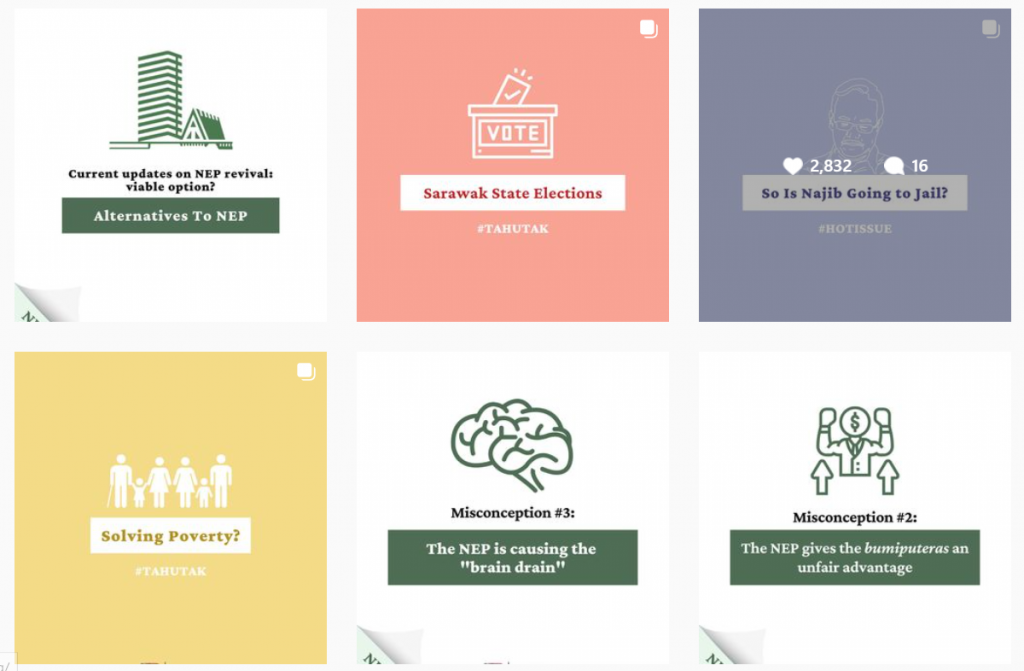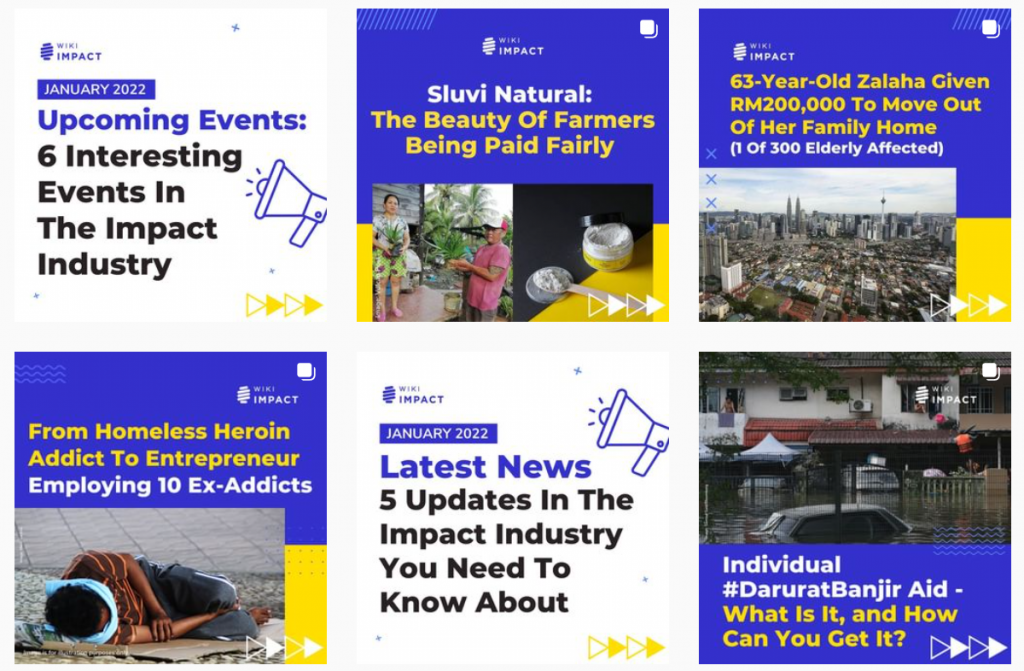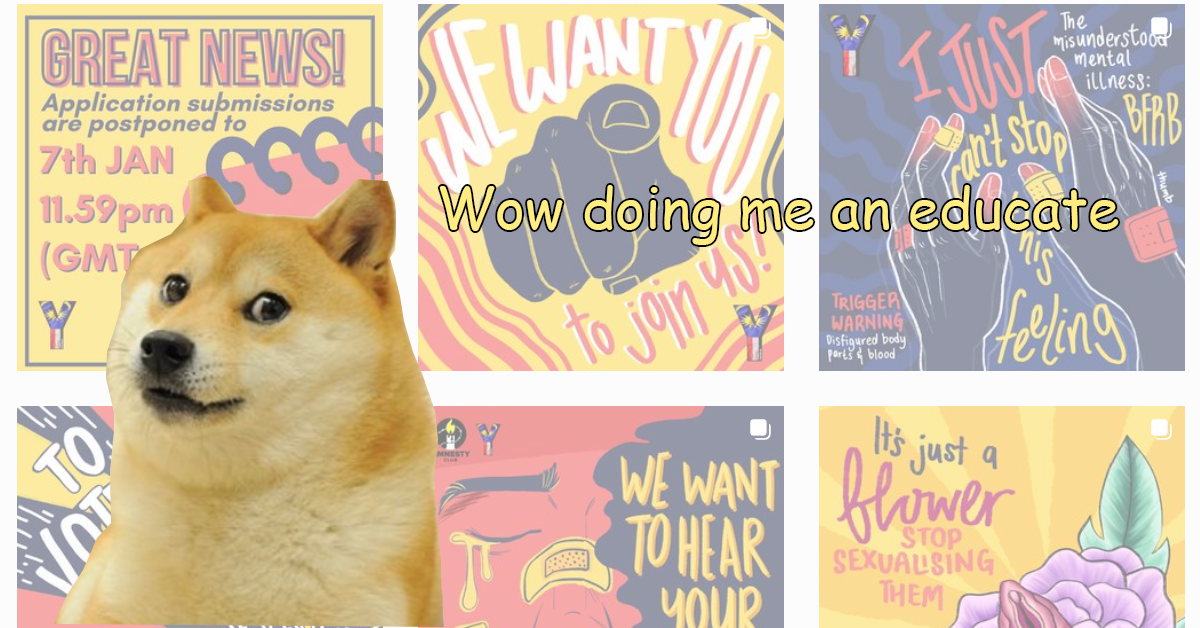Since the past two years, there seems to be a rise in Malaysian NGOs using Instagram as their main platform to reach the local audience.
By NGOs, we’re not talking about existing organisations that use social media as their communication channels (think of WAO, Mercy Malaysia, PSM) to post events posters or season greetings.
Instead, these accounts act more like a blog, with the sole purpose of publishing educational content.
In this article, we’ll take a look at these accounts and the key insights that may be useful for your own non-profits/social movement. Starting with:
1. The Loud Asians
Link: The Loud Asian on Instagram

The Loud Asians (TLA) focuses on taboo and thorny political topics, especially related to race.
While the content features a lot of researches and references, the tone itself reads more like an op-ed.
Their top-performing posts:
- What Malaysians Must Remember for The Next Election: 60K likes, 555 comments
- Saya bukan pendatang: 70K likes, 2K comments
- Justice for A. Ganapathy: 64K likes, 647 comments
- You’re From China? No Wonder: 44K likes, 796 comments
- PM Baru, Cara Lama?: 35K, 964 comments
The editorialising is perhaps what’s encouraging a lot of comments, and with that also comes a lot of trolling and hostility.
There is a lot of demand asking for the content to be translated to BM. TLA has clarified that their BM posts tend to get a tremendous amount of hostility and they don’t have the capacity to deal with it right now.
2. YPOLITICS
Link: YPOLITICS on Instagram

YPOLITICS mainly do two types of content: 1) Recap current issues with added contexts to make them accessible to the masses, and 2) Break down a particular political issue in an explainer.
The topics selection tends to be fairly heavy so they put a lot of effort into making the information digestible, both structurally AND visually (whoever their writers and designers team are, they must’ve some great working chemistry).
Their top performing posts:
- Harassment at Police Roadblocks: 20K likes, 265 comments
- The Covid-19 Vaccine Deal: 5K likes, 48 comments
- The Rise of White and Black Flags: 4.8K likes, 10 comments
Their more sombre tone and the framing of some topics help in culling hostility, especially in more heated posts such as the NEP.
3. Wiki Impact
Link: Wiki Impact on Instagram

Wiki Impact has more variety in its content types which include news, listicles, events, and jobs in the social work industry.
They have a strong and consistent brand identity, down to the colour palette and recurring visual elements.
After experimenting with the more conventional formats of IG posts (quotes, single image with “link in bio” etc) in their early days, recently they mostly stick to the photo album and video format, with the occasional IG Guides.
Their content goes beyond just Instagram, with long-form articles being published on their website and a Telegram group for job postings.
Their top-performing posts:
- Finally, in 2022, B40 Teenage Girls Get Free Pads: 1K likes, 9 comments
- 7 Power Female Youth Activists: 1K likes, 38 comments
- Different Experiences During #MalaysiaBanjir: 1K likes, 33 comments
Wiki Impact content direction is probably the closest one that you can emulate if you’re running an NGO and plan to use social media as a marketing medium.
4. Youths.my
Link: Youths.my on Instagram

Youths.my has a similar tone and approach as TLA, covering diverse topics including LGBTQ+ issues, sexual crimes, and mental health.
Their top-performing posts:
- Racism in Malaysia: Part 1: 8K likes, 114 comments
- Police Misconduct on The Indian Population in Malaysia: 8.6K likes, 138 comments
- It’s Just a Flower Stop Sexualising Them: 4K likes, 70 comments
- SPM Students Calls For Alterations of SPM… : 2.7K likes, 140 comments
- How Many More Will It Take? Justice For…: 2.8K likes, 9 comments
They also have a BM counterpart on @youths.my.bm, although the engagement over there is too litle to assess for now.
5. The Noeo Project
Link: The Noeo Projecton Instagram

The Noeo Project has a more frequent publishing schedule, covering a broad set of topics.
Their layout is minimal and text-heavy, (albeit the colour selection makes it hard to read sometimes), which may be convenient if they publish content at a fast pace while working with multiple contributors.
Their top-performing posts:
- Uighur Muslims: Forced Labour in the Fashion Industry: 39.7K likes, 552 comments
- Rape, Incest and Paedophilia in Malaysia: 16K, 314 comments
- Combatting Marital Rape in Malaysia Through Sex Education: 6.8K, 57 comments
- The White Flag Movement in Malaysia: 5.7K likes, 22 comments
- How to Help With White Flag Movement: 4.5K likes, 11 comments
Long-form content on Instagram: challenges and opportunities
The popularity of these Instagram accounts proved that long-form educational content works among Malaysian youths, just as long as they can find it whey they’re at (ie Instagram).
However, if you do intend to go with this style of visual article, be aware of its operational cost and limitation.
- While a regular blog article only needs a writer with basic knowledge of photo editing, publishing infographics does require a dedicated graphic designer. This means you’ll double the cost and delivery time.
- Writers need to be mindful of their text length to make sure it fits within the visual, at the same time designers need to be mindful not to break texts in places they shouldn’t be for the sake of looking good.
- You can’t simply make corrections for errors or typos as you would do on a blog article.
- Explore tools like Canva that offers free/cheap templates and supports multi-users collaboration.
Bringing it back to the mothership
A good piece of advice in content marketing is to channel your audience back to a platform that you own (your website, mailing list, etc) so you won’t fully be under the whim of your capitalistic Meta overlord.
You can do this in various ways such as linking back your IG stories to your website, collecting newsletter signups or Telegram members, and so forth.
When you own your data, you can also segment them so you know who to reach out for specific goals (e.g. volunteers, donations, etc).
Dealing with the mob
Another aspect that you may have to consider once your platform gets bigger is community management.
For the BM-speaking audience, re-appropriating the content works better than translating, considering the different values that they hold. And while they can be particularly vitriolic in the comments, sometimes the only way to deal with this is to troll them back.
This requires a lengthy discussion on its own, and hopefully, we’ll get to it soon. Till then, happy new year!

Be First to Comment